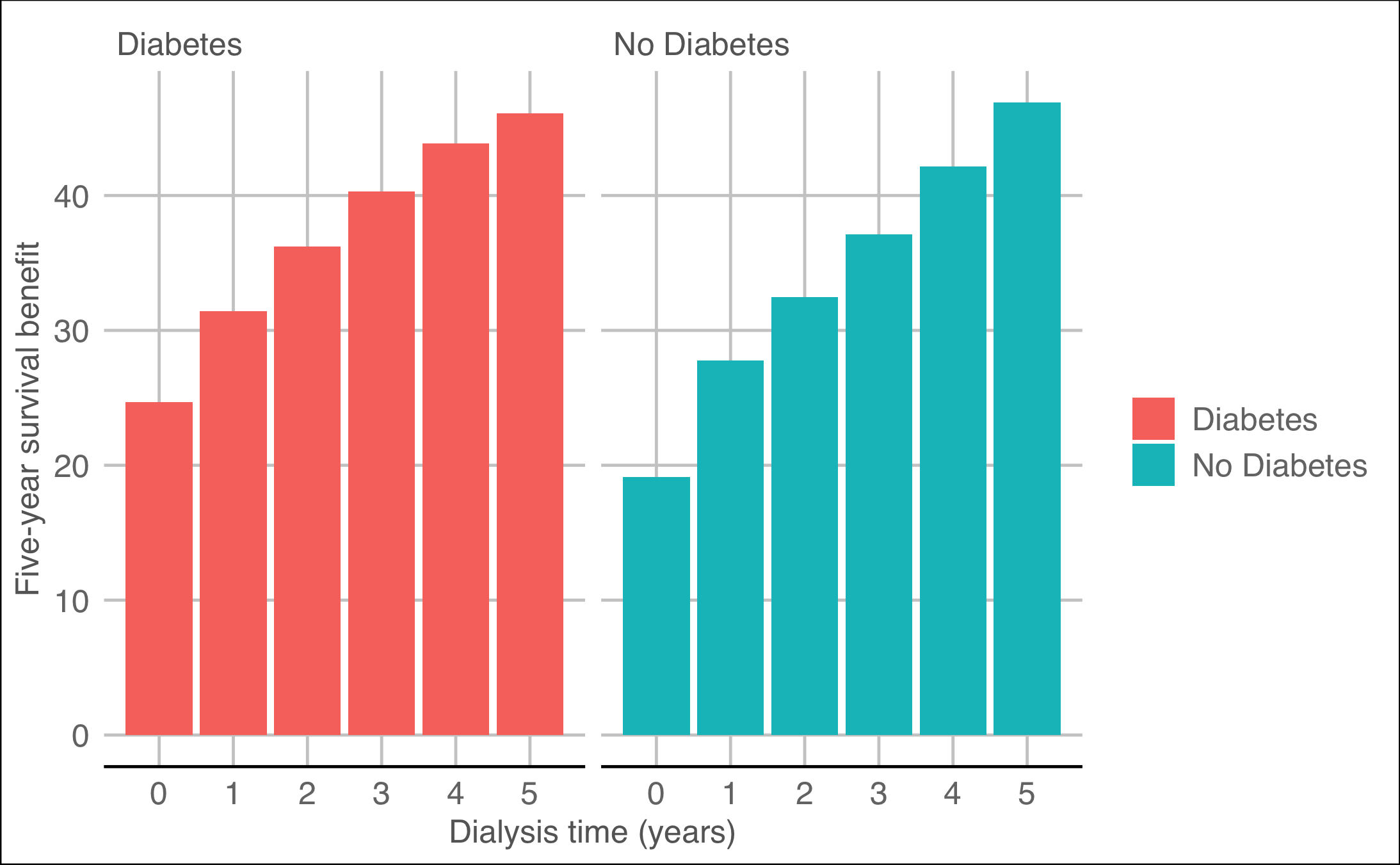The Association of Pre-Transplant Dialysis Time and the Survival Benefit of Deceased Donor Kidney Transplantation
1University of Chicago, Chicago, IL, 2University of Chicago, Hinsdale, IL
Meeting: 2022 American Transplant Congress
Abstract number: 310
Keywords: Allocation, Ethics, Kidney transplantation, Public policy
Topic: Clinical Science » Kidney » 50 - Health Equity and Access
Session Information
Session Name: Health Equity and Access I
Session Type: Rapid Fire Oral Abstract
Date: Monday, June 6, 2022
Session Time: 5:30pm-7:00pm
 Presentation Time: 6:10pm-6:20pm
Presentation Time: 6:10pm-6:20pm
Location: Hynes Ballroom C
*Purpose: The US Kidney Allocation System (KAS) allows for deceased donor kidney transplant (DDKT) candidates not yet on dialysis to accrue waiting time points by listing at a transplant center with a low estimated glomerular filtration rate. Combined with inequity in access, this policy has led to large racial and socioeconomic disparities in preemptive transplantation. While preemptive DDKT is associated with higher graft survival, the association of dialysis time with the survival benefit of DDKT is unknown.
*Methods: Using the records of all adult deceased donor kidney candidates listed from 2005-2010 we developed a novel mixed-effects model to estimate the survival benefit of deceased donor kidney transplantation (DDKT). Our model improves upon the existing literature by accounting for center effects, time-dependent covariates, non-proportional hazards, and interactions between candidate and donor variables in a single joint model of the pre and post-transplantation periods. We estimated the 5-year survival benefit of DDKT for preemptive transplants and for each additional year of dialysis, adjusted for transplant center effect, ischemic time, donor KDPI, recipient age, and history of previous transplant or diabetes.
*Results: Of the 132,909 candidates (mean age 52 at listing, 60% male) in the study population, 64,589 (48.6 %) received a transplant by the end of follow-up on March 1st, 2021. DDKT was associated with an improvement in estimated five-year survival from 50.8% to 82.4%, a 31.6% absolute survival benefit. The survival benefit of transplantation increased with each additional year of waiting on dialysis for patients with and without diabetes (Figure). For median age recipient (55 years old) without diabetes, a preempetive transplant with a KDPI 43% kidney improved survival from 73% to 93%, an absolute 5-year survival benefit of 19%. For a similar recipient with 5 years of waiting on dialysis, a DDKT with a 43% KDPI kidney improved survival from 31% to 78%, an absolute 5-year survival benefit of 47%.
*Conclusions: Candidates on dialysis have a higher risk of death without transplantation leading to a greater survival benefit from DDKT than candidates transplanted preemptively. By assigning waiting time points to patients not yet on dialysis, KAS ignores the Final Rule requirements to rank-order candidates by medical urgency and exacerbates disparities in kidney transplantation. To improve efficiency and equity, KAS should be revised to eliminate pre-dialysis waiting time points.
To cite this abstract in AMA style:
Parker WF, Becker Y, Gibbons R. The Association of Pre-Transplant Dialysis Time and the Survival Benefit of Deceased Donor Kidney Transplantation [abstract]. Am J Transplant. 2022; 22 (suppl 3). https://atcmeetingabstracts.com/abstract/the-association-of-pre-transplant-dialysis-time-and-the-survival-benefit-of-deceased-donor-kidney-transplantation/. Accessed December 29, 2025.« Back to 2022 American Transplant Congress

